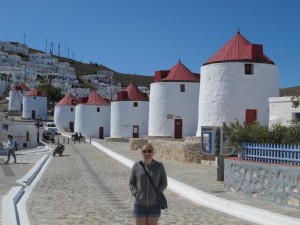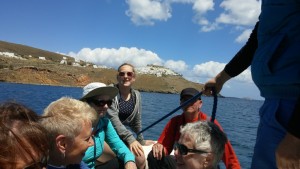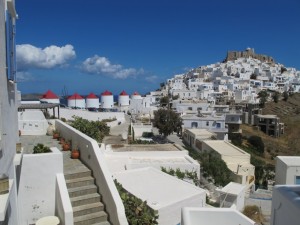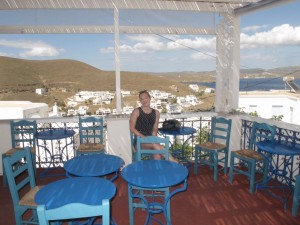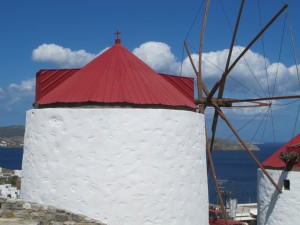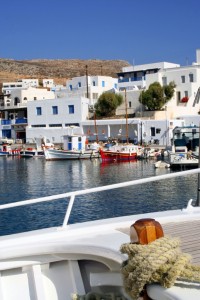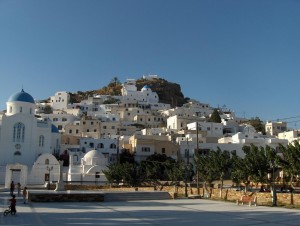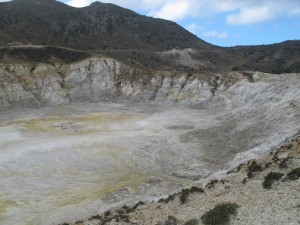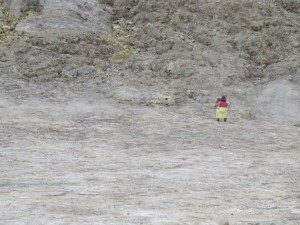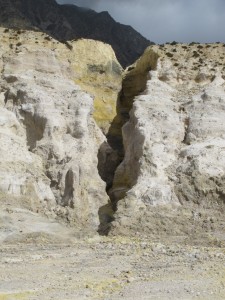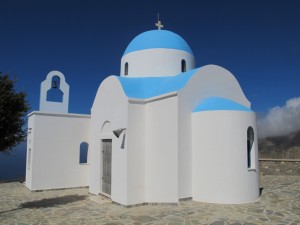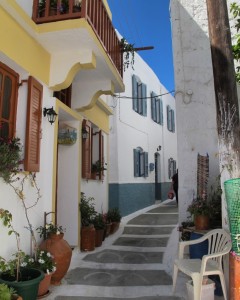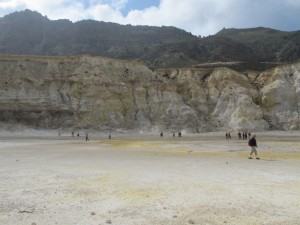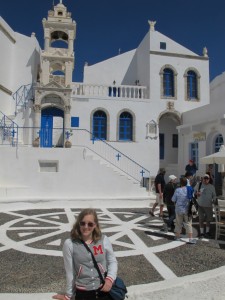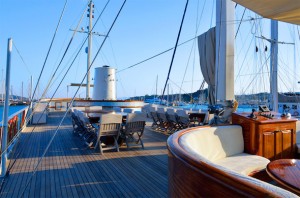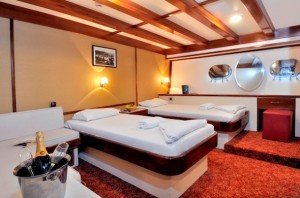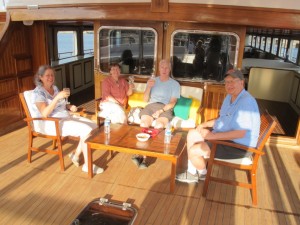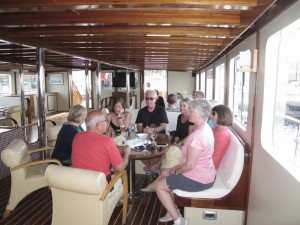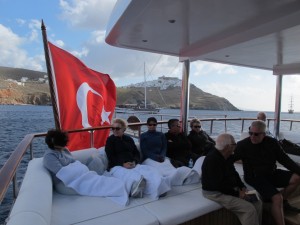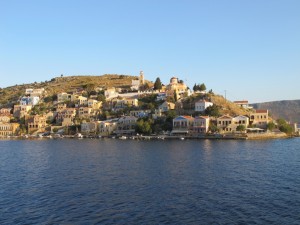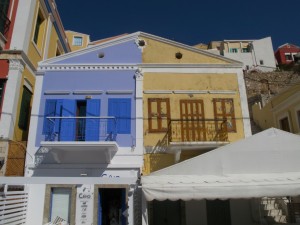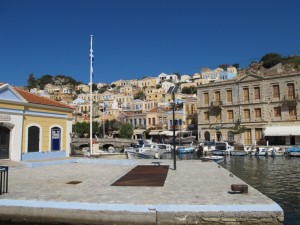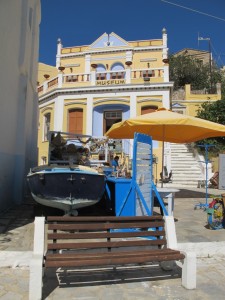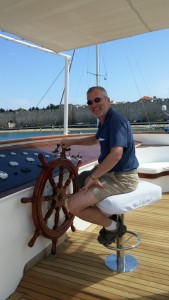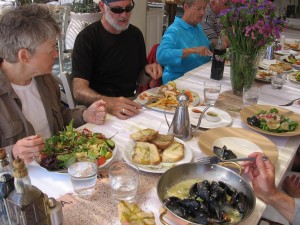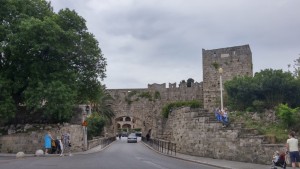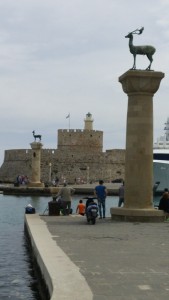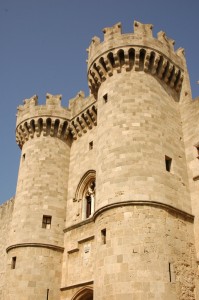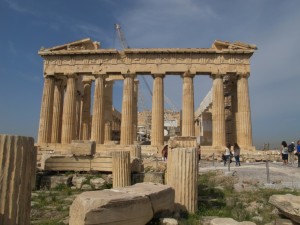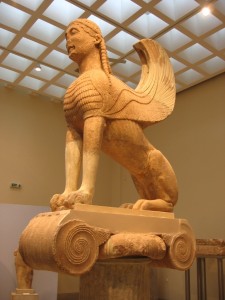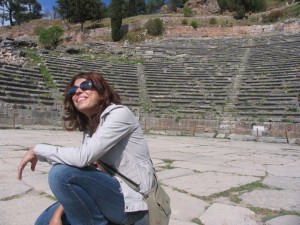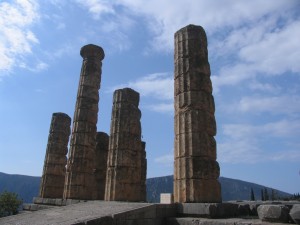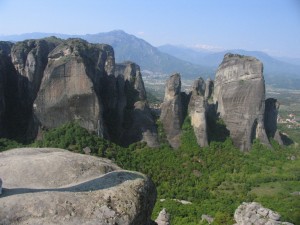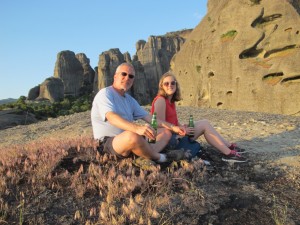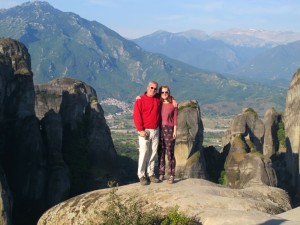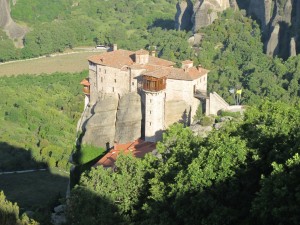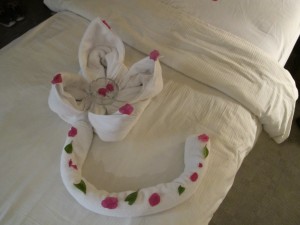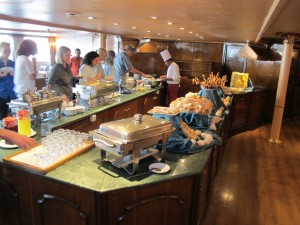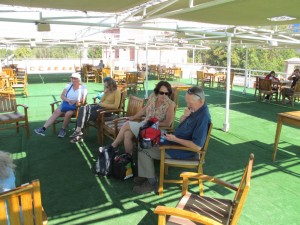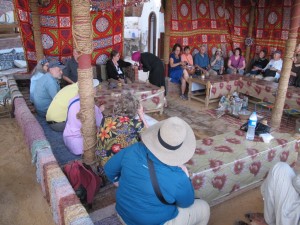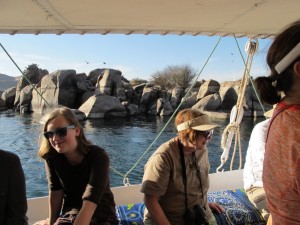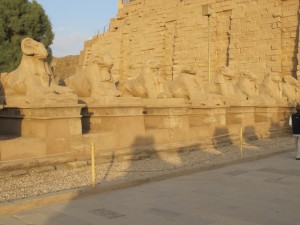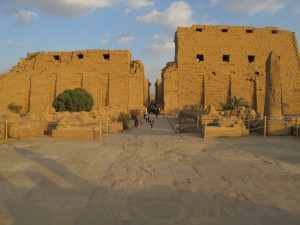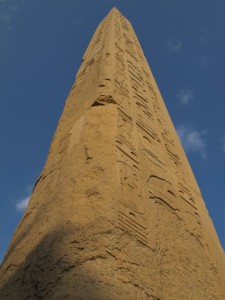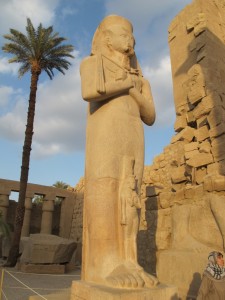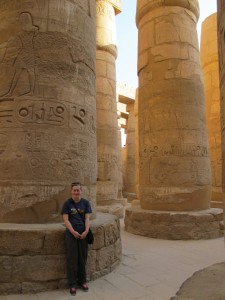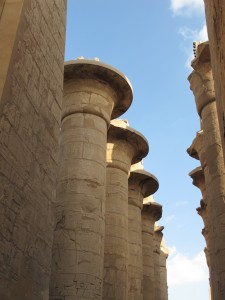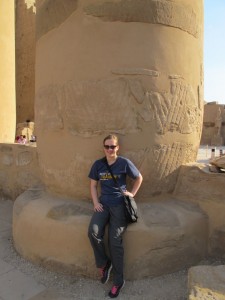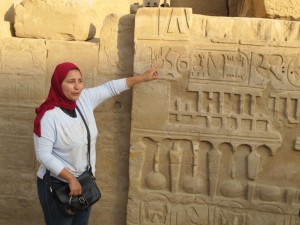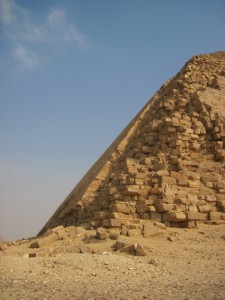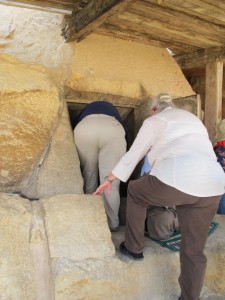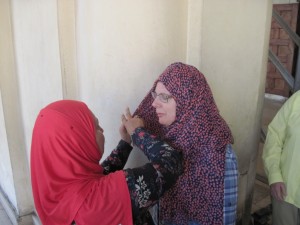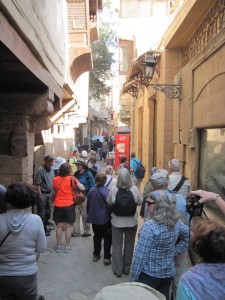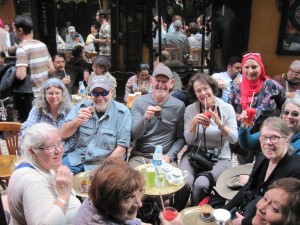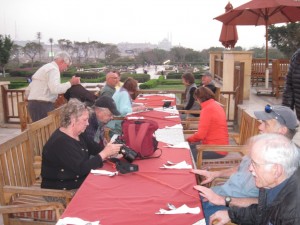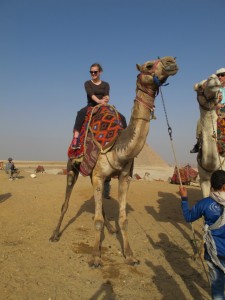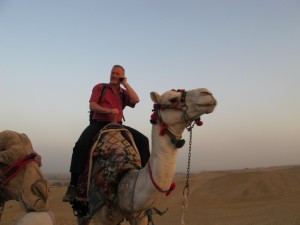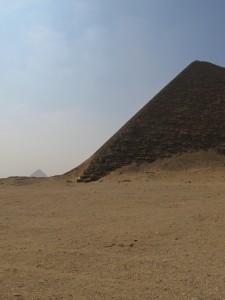This week we successfully completed Imprint’s initial Greek Islands Tour (GIT). Long in the planning, the tour went off with minimal bumps in the road, or rather waves in the sea, lots of laughing, some interesting history, some amazing cultural connections, and a seemingly unending stream of impossibly picturesque Greek islands. That is why I’ve chosen to call this missive “The Impossible Island Tour”. Because daily, if not hourly, I found myself describing what I was seeing as impossibly picturesque, impossibly lovely, impossibly charming, impossibly cute, etc. [Adjective alert! There are simply not enough available: cute, picturesque, lovely, charming, photogenic, and amazing will be overused.]
All in all, it was an amazing two weeks. In the coming few weeks I’ll be sharing installments describing the day by day activities and highlights of the tour. But for now, I will simply give a quick overview and get some images posted.
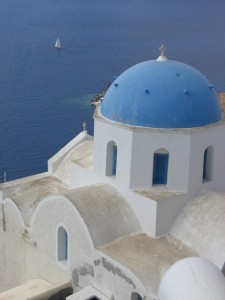
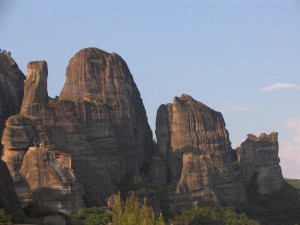
I have long held that Meteora is one of the most breathtaking and unique travel destinations not only in Greece but in the whole wide world. So I was not about to create a Greek tour that did not give the opportunity for people to see this impossibly spectacular destination. So for those opting for the

tour extension, we gathered for dinner in Athens, then headed for Meteora in the morning. As Delphi is essentially on the way, we made a quick stop there, entertained by our engaging and charming local guide Penny. We arrived in Meteora at the end of the afternoon as the sun was just starting to warm up the western facing towers of stone. The following morning we had our tour of one of the monasteries (as many as 24 in the past but only 6 still active today) before making a beeline to the airport to join the rest of the group on the island of Rhodes.



Rhodes is the biggest and most diverse of the Dodecanese group of islands. Just off the Turkish coast, it boasts one of Europe’s most charming medieval old towns, well preserved crusader fortifications, a crusader palace, a lovely night energy, and miles of beaches. South of the main town is the impossibly picturesque Acropolis of Lindos.
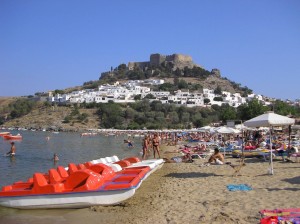
Smaller than Athen’s more famous hill, Lindos makes up for it with its spectacular seaside venue. We had a local guide who brought the islands’ history and culture alive for us on a day long tour.
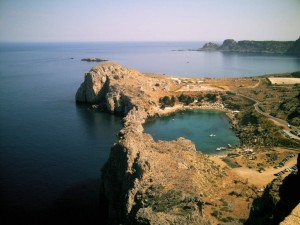

After two nights on Rhodes we were ready to head out to sea on our two gulets, or Turkish yachts. Our lovely boats were very comfortable and staffed by hard working and pleasant staff. Our first island “hop” was nearby Symi and our first impossibly cute harbor village. Spilling down the step hillsides to the blue Aegean were pastel colored houses, all resembling nothing more than little Greek temples. Amazing.


An afternoon’s motoring brought us to little known Nisyros. Perhaps lacking the impossible charm of other stops, Nisyros was certainly fascinating. It is perfectly round and dominated by an immense, still active volcano. We toured the smaller active crater within the giant caldera and then visited the impossibly photogenic village of Nikia perched on its rim.


Another afternoon of sailing brought us to Astypalea. I had meant to simply spent the night here en route to Amorgos. But the winds picked and high seas turned us back the following morning and we ended up spending the day. What an amazing bit of travel serendipity! Astypalea is impossibly beautiful and charming. Sugar cube houses spill down a steep kastro-topped hill to the harbor. If that weren’t picturesque enough, they’ve built two blue-domed churches within the ruined fortifications. But there’s more. Along the ridge of the hill’s saddle, a row of gleaming white, red-roofed windmills completes the postcard vista.


Our lost day of sailing meant Amorgos had to be skipped, but calm seas meant we were able to make excellent time and sail all the way to Ios. Ios was a backpacker party island when I visited 35 years ago. It has been gentrified since, with boutique shops and restaurants dotting the meandering narrow lanes of the whitewashed harbor village.
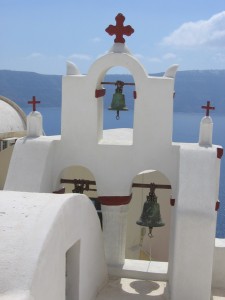
On day six of our gulet adventure we motored for the jewel in the Greek island crown – Santorini. Impossibly beautiful! Impossibly picturesque! Impossibly romantic! Santorini is simply the most beautiful place I’ve ever been, bar none. We did a scenic cruise of the sea-filled caldera, had an island tour that included the Minoan archeological site of Akrotiri, red and black sand beaches, the impossibly quaint village of Megalochora, and the impossibly stunning artist hamlet of Oia. But the highlight of this magical place was the Orthodox Easter activities of the weekend. On Good Friday we witnessed the famous Epitaph
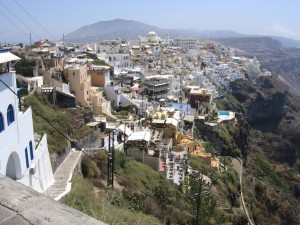
procession of hill-top Pyrgos. Locals line the procession route (rooftops, walls, curbs, everywhere) with canisters of oil-soaked cloth which are lit when the ikon emerges from the church at the top. The entire hill turns into a shimmering, living scene of flickering fire light. It is impossibly magnificent. We visited the procession route and church for explanations from out guide Eugenia, then retreated to a wonderful view restaurant to watch the spectacle unfold. It was impossibly memorable!


On Saturday we enjoyed a free day for island explorations or relaxation on our caldera-rim-clinging resort. On Easter Sunday, our impossibly charming local guide Eugenia had arranged for us to enjoy the traditional Easter meal in a family taverna. We literally feasted with lots of wine, tasty mezedes (small appetizers), and traditional spit-roasted lamb. It was a fitting climax to our amazing two weeks in the islands.

This was a tour we will be repeating regularly in the future. In fact, the next time around will be in September or October of next year. Mark is on your calendars. Come share the impossibly charming, beautiful, picturesque, jaw-dropping Greek Islands with Imprint.

For more wonderful images, Maia was posting on Instagram throughout the tour. If you would like to see them and/or follow Maia’s future photographic journeys with Imprint - Create an account on Instagram; search Maia’s username (maia_coen); select “follow” at top of page.
 Astypalea turned out to be a serendipitous surprise. We had planned to simply spend the night there as a necessary stop en route to Amorgos. But sailing the Aegean means one is always subject to the whims of the sea. Zephyr is the Greek god of wind, and he had other ideas for us. After breakfast we began our journey to Amorgos. But no sooner had we rounded the headlands into open sea but we were blown about like corks on the water. The captains immediately turned back. It was the right decision for safety reasons. But it turned out to be the right decision in every way.
Astypalea turned out to be a serendipitous surprise. We had planned to simply spend the night there as a necessary stop en route to Amorgos. But sailing the Aegean means one is always subject to the whims of the sea. Zephyr is the Greek god of wind, and he had other ideas for us. After breakfast we began our journey to Amorgos. But no sooner had we rounded the headlands into open sea but we were blown about like corks on the water. The captains immediately turned back. It was the right decision for safety reasons. But it turned out to be the right decision in every way.

